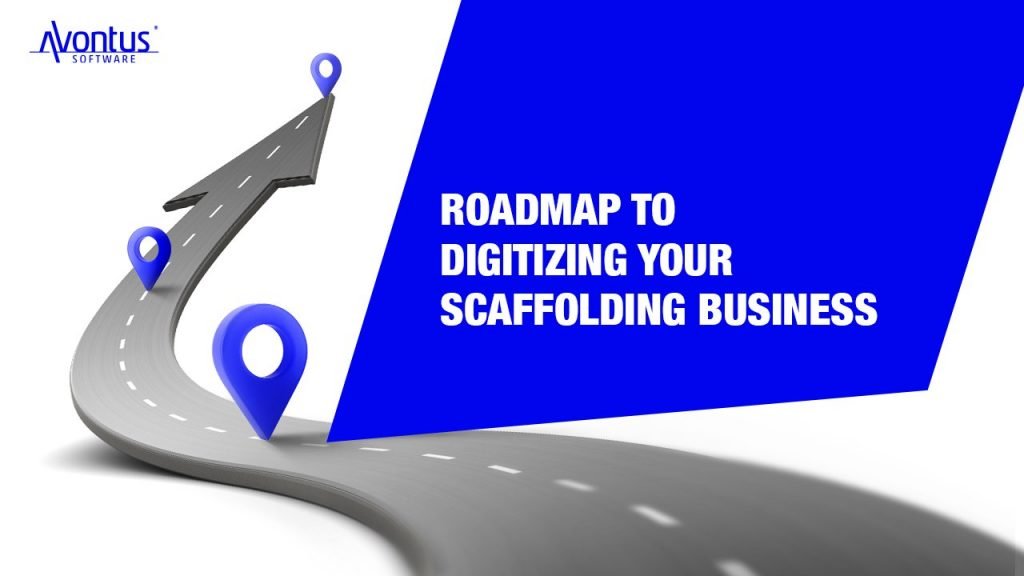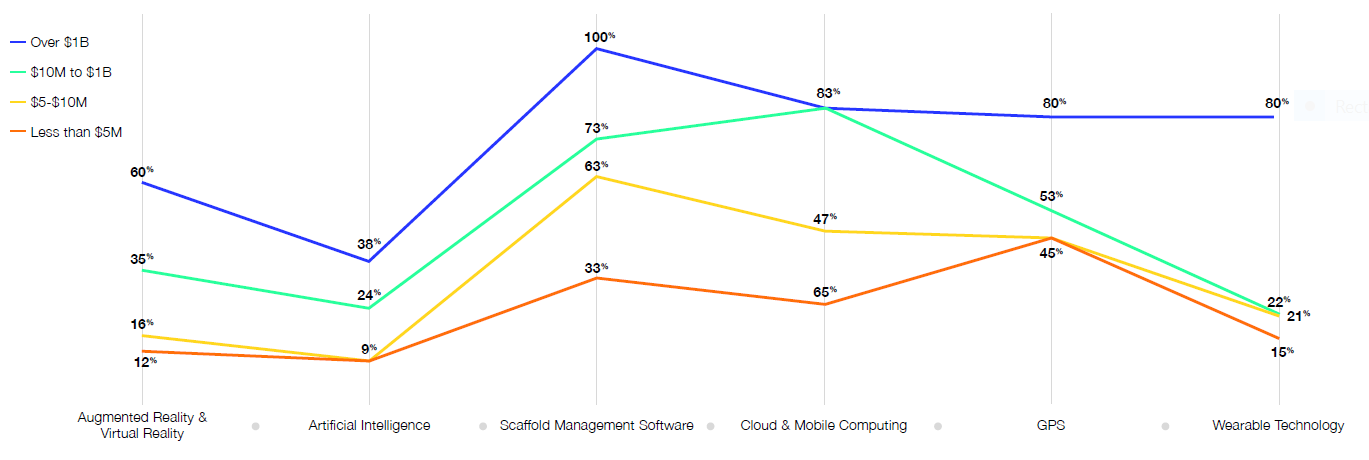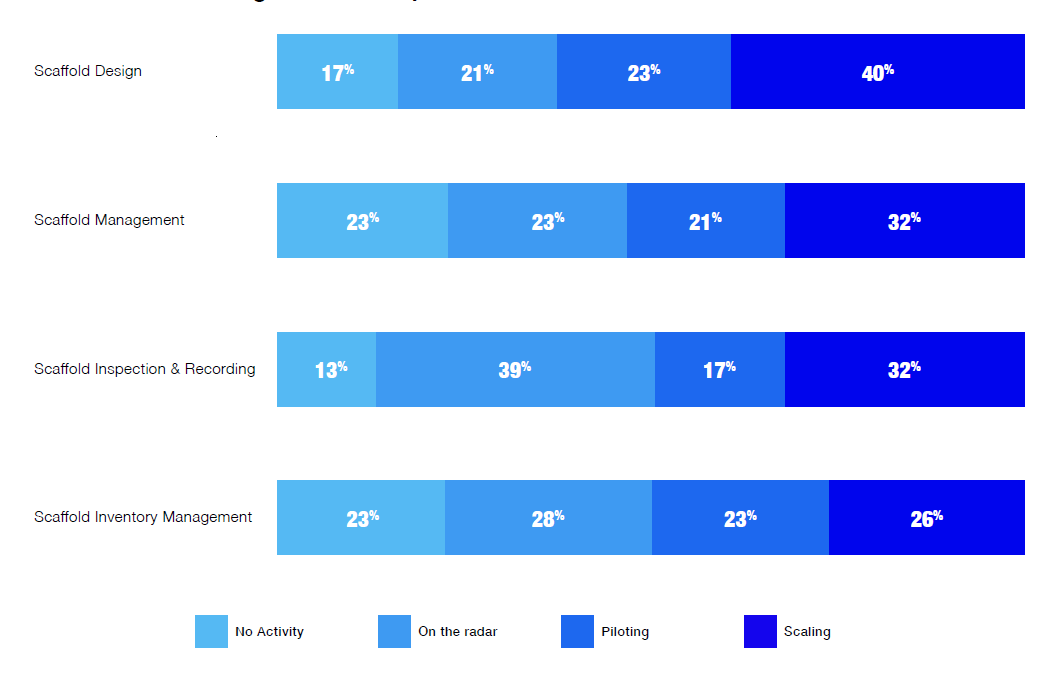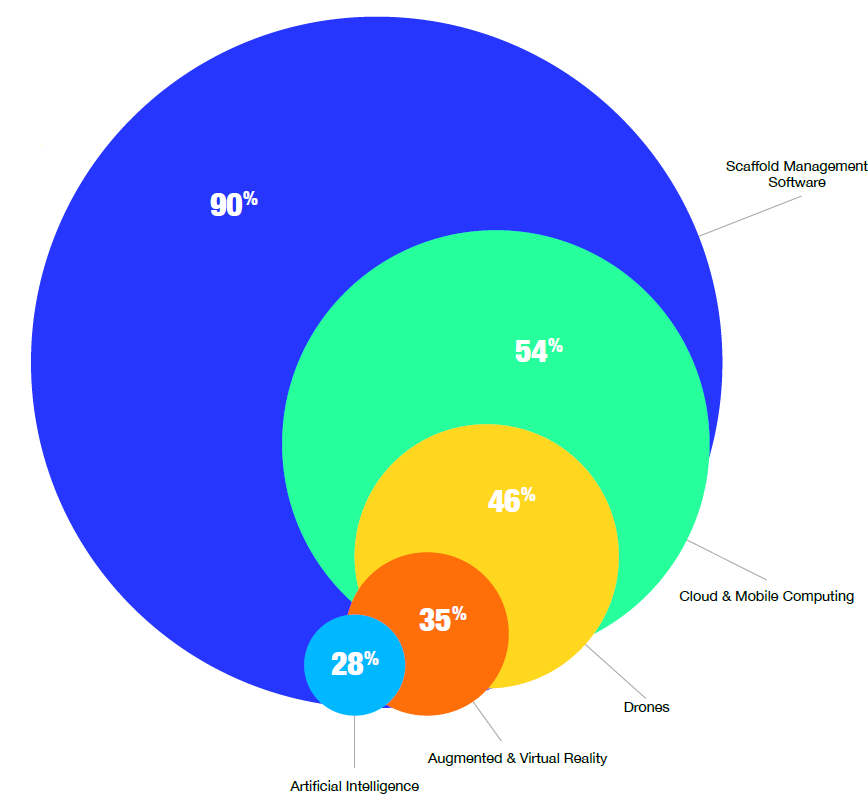Free Manufacturers’ Catalogs in Avontus Designer Unlock Efficiency
In scaffolding design, achieving accurate and efficient project outcomes relies on using the right tools and resources. With Avontus Designer®,… Read More

In a recent survey that we conducted with ScaffMag, we found that digitization reigns supreme when it comes to helping businesses grow profitability in the cutthroat scaffolding industry. When executed right, digital transformation can result in maximized productivity and minimized expenses.
But how do you even start digitizing your company? Investing in drones to help with remote inspections? Mandating that workers wear their wearable technologies to maintain physical distancing at jobsites? Or maybe it’s as easy as deploying scaffold design software in your company?
No matter your technology investment, successful digitization is not a top-down, one-time effort, but rather a process of continuous improvement that involves enterprise-wide participation.
In this blog post, we’ll explain how you can best future-proof your scaffolding business with insights from The State of Scaffolding Technologies 2020 report, all in one clearly defined roadmap.
Start your digitization by assessing the areas below to understand the current level of digital maturity of your scaffolding business. You can then identify opportunities for improvement and set achievable goals for transformation.
Based on our report, 85% of respondents said that they already have some form of digital application in place.
Identify the existing digital solutions in your scaffolding company and the business processes they’re used in. Check if your company is using them to the fullest potential and reaping adequate rewards (e.g. deploying a scaffold design software for faster design creation). Is there room for improvement?
Also, review and revise your policies surrounding technology deployment to streamline digitization. For example, integrating your scaffold design and inventory management systems can help to speed up the estimating and planning process.
78% of our respondents said that implementation cost is the biggest challenge when adopting a new scaffolding technology.
Remember that the returns of technology investments aren’t always apparent immediately, especially when operational costs are incurred daily, and profit margins are thin. Hence, allocate adequate funding to sustain your digitization effort until completion.
To avoid large capital expenditure, consider incremental digitization, taking on new technology module-by-module instead of all at once. This is a great way to reduce up-front cost while also making transformation more manageable.
That’s why half (56%) of our respondents prioritize subscription-based SaaS solution to immediately improve operating margins, and later scale it as their businesses grow.
73% of respondents said that a steep learning curve is another challenge when adopting a new scaffolding technology.
Digitization is not as easy as adopting a new digital solution and expecting the team to start using it. You must consider their readiness to switch to a new and improved working process and get organizational buy-in.
To flatten the learning curve, choose scaffolding-specific digital solutions with capabilities like customizability, quick onboarding, and seamless integration.
Ensure that the software vendor provides extensive implementation, training, and support services from staff who aren’t just software experts, but who understand the specific needs of your scaffolding operation as well.
The next stage in the roadmap is to choose and digitize scaffolding business processes that bring significant rewards.
Find the easiest and most cost-effective way with manageable risk to introduce digital solutions into your business processes. We found that higher revenue companies prioritized adopting scaffolding management software as well as mobile and cloud computing.

When we dig deeper into software implementation, transforming scaffold design process is a hit among our survey respondents with 40% of them already scaling a design software.
So, if you’re using legacy drawing methods or generic computer-aided design (CAD) applications, switching to a scaffolding-specific design software can be a quick digitization win for your company.

To get the most value out of your digitization process, extend and accelerate transformation across your company.
Our report found that digitizing back-office operations (e.g. visualizing scaffold designs) can optimize field execution (e.g. erecting scaffolding on jobsites).
So, with a scaffolding-specific solution like Avontus Designer®, you can immediately create a scalable cross-team scaffold visualization process. This will then improve overall productivity through more efficient estimating, planning, and execution.
For example, when you use Avontus Designer alongside Avontus Quantify®, you can generate estimates, pick tickets, and equipment deliveries by just importing drawings and your Bill of Materials (BOM).
Besides software adoption, consider introducing new digital solutions that can complement the types of services provided by your company.
For instance, if most of your projects require erecting or inspecting scaffolds in hard-to-reach places (e.g. high-rise buildings or congested work areas), drones will be a great addition to your digitization effort.
Other technology investment priorities of surveyed companies include augmented and virtual reality (35%), and artificial intelligence (28%).

Through digitization, you’re equipping your scaffolding company with a competitive advantage that’ll allow you to continuously secure wins in an ever-changing industry landscape.
For best results, deploy digital solutions according to business needs, balancing easy wins with a focus on areas of greatest importance to your success. Once you’re making good progress, continue to scale your new system and look for new areas of improvement.
Download the report today to discover more digitization insights and find out how other scaffolding leaders are transforming their businesses using the latest technologies.